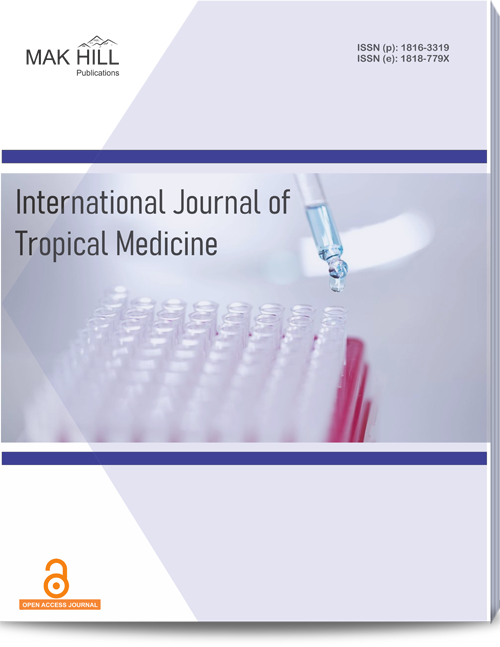
International Journal of Tropical Medicine
ISSN: Online 1818-779XISSN: Print 1816-3319
Abstract
Chikungunya is caused by arbo virus belongs to the genus alpha virus which is transmitted through mosquito of genus aedes, mainly Ae. aegypti and Ae. albopictus. These geographical genotypes exhibit differences in the transmission cycles. In contrast to Africa where Sylva tic cycle is maintained between monkeys and wild mosquitoes, in Asia the cycle continues between humans and the Aedes aegypti mosquito. Virus was first isolated from Africa in 1952. In India first case were reported in Kolkata 1963. It can be diagnosed by various blood tests such as RT-PCR, ELISA, serological test, etc. The disease is almost self-limiting and rarely fatal. Common symptoms of chikungunya are fever, joint pain (arthralgia), rashes, etc., symptoms for chikungunya and dengue as similar. In allopathy no specific drug is available for the treatment of chikungunya. In AYUSH system of medicine various type of treatment are available. India has been reported major outbreak in 2005-2006 mainly in the states of Andhra Pradesh, Karnataka, Maharashtra, Madhya Pradesh and Tamil Nadu, since, December, 2005. Cases have also been reported from Rajasthan, Gujarat and Kerala Chikungunya Virus (CHIKV) infection can be prevented by avoiding mosquito bites.
How to cite this article:
Rugma V. Ranadev and M. Karthikeyan. Chikungunya Outbreaks and Management: A Review.
DOI: https://doi.org/10.36478/ijtmed.2020.19.23
URL: https://www.makhillpublications.co/view-article/1816-3319/ijtmed.2020.19.23